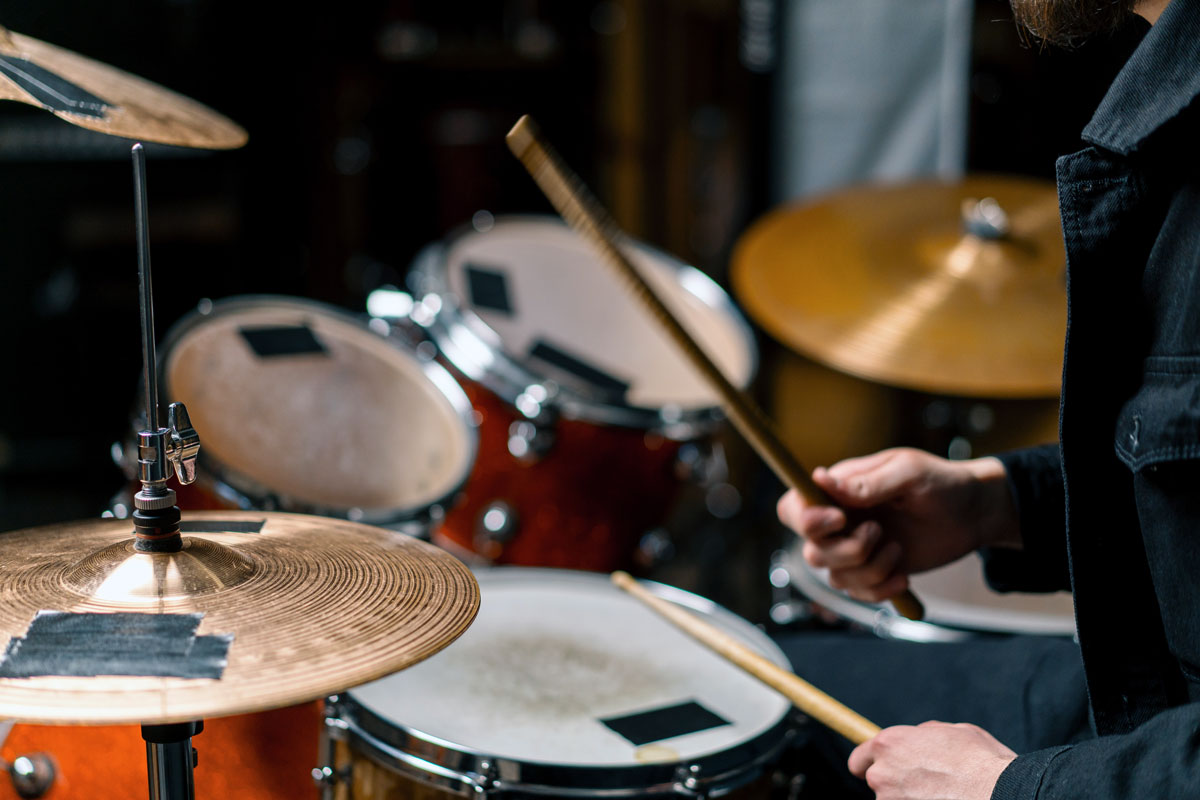Mastering Flow on the Drums: The Key to Effortless, Fluid Playing
Ever watched a drummer who makes everything look effortless? Their hands and feet move seamlessly, every groove and fill flowing naturally. That’s the essence of flow in drumming—playing smoothly, without stiffness or hesitation.
Drumfluence is reader-supported. When you make a purchase through links on our site, we may earn an affiliate commission at no extra cost to you. Learn more.

Flow separates an average drummer from a great one. It’s what makes playing feel natural rather than forced. Developing flow means learning small rhythmic patterns, combining them in creative ways, and mastering transitions so your drumming always feels fluid.
In this article, we’ll break down exactly how to build flow, from basic drumming vocabulary to advanced phrase groupings. You’ll also get practical exercises to apply these concepts immediately.
What Is Flow in Drumming?
Flow is the ability to move seamlessly between ideas and patterns without hesitation. It’s what makes a fill feel like part of the groove rather than something separate.
Common Struggles That Kill Flow:
- Stiffness: Overthinking each note leads to robotic playing.
- Hesitation: Feeling unsure about transitions creates awkward timing.
- Lack of phrasing: Playing random fills without musical structure.
Flow comes from internalizing vocabulary, building muscle memory, and developing musical awareness. One key tool? The metronome. Practicing with it locks in consistency and removes hesitation.
The Foundation: Learning Simple Patterns (Drumming Vocabulary)
Before you can flow, you need words—the basic patterns that form your drumming language.
Essential Drumming Vocabulary:
- Sticking patterns: Single strokes, double strokes, paradiddles.
- Rudiments: Flams, drags, diddles, rolls.
- Subdivisions: Eighth notes, sixteenth notes, triplets.
The goal isn’t just playing these rudiments but owning them. Repetition is key, but don’t just loop patterns—practice them in context, applying them to grooves, fills, and solos.
Building Flow: Connecting Patterns Into Phrases
Drumming is a language:
- Small patterns = words
- Grouped patterns = phrases
- Extended phrases = musical sentences
The more fluently you connect patterns, the more natural your playing feels.
Practicing Common Phrase Lengths:
- 2-note groupings: RL, RR, LL variations.
- 3-note groupings: RLL, RLR, LRL
- 5-note groupings: RLRLL, LLRLR
- 7-note groupings: RLRLRLL, LRLRLRR
- 9-note groupings: RLRLRLRLL, LRLRLRLRR
The key? Expand and contract phrases to develop rhythmic flexibility.
Developing Fluency: Playing With Ease and Confidence
A smooth drummer isn’t just fast—they’re comfortable at all tempos. Developing fluency requires intentional practice.
Strategies for Better Flow:
- Slow to fast practice: Gradually increase speed for control.
- Metronome workouts: Play patterns at different tempos and subdivisions.
- Smooth transitions: Move between different phrase lengths without stopping.
- Improvisation drills: Use learned vocabulary in creative ways.
Practical Exercises for Flow Development
Exercise 1: Looping Simple Phrases with Accents
- Take a basic pattern (RLRR) and shift the accent placement.
Exercise 2: Playing Odd Groupings Over a Steady Pulse
- Play 5-note and 7-note groupings over quarter notes.
Exercise 3: Switching Between Phrase Lengths Without Stopping
- Example: Play 3-note, 4-note, and 5-note patterns back-to-back. This helps you land on odd placements in the bar line to challenge your timing.
Exercise 4: Improvising Using Learned Phrases in a Groove
- Start with a groove, insert different fills, and return seamlessly.
Exercise 5: Applying Phrases to Fills and Solos
- Use phrase groupings to create musical drum solos.
Applying Flow to Musical Contexts
Drumming isn’t just about technical exercises—it’s about making music.
How to Apply Flow:
- Grooves: Stay relaxed and locked in with the band.
- Fills: Make transitions seamless instead of choppy.
- Solos: Use phrasing and structure rather than random ideas.
Flow in Different Genres:
- Funk: Syncopation and pocket (e.g., Dennis Chambers).
- Jazz: Loose, conversational phrasing (e.g., Tony Williams).
- Rock: Driving, powerful fills (e.g., John Bonham).
Listen to drummers known for effortless flow, like Vinnie Colaiuta, Steve Gadd, and Carter Beauford.
Overcoming Common Flow Challenges
Struggle: Tension and Stiffness
- Solution: Stay relaxed, especially in fast playing.
Struggle: Losing Time or Hesitating
- Solution: Work with a metronome at different tempos.
Struggle: Mental Blocks in Improvisation
- Solution: Build confidence by looping patterns into longer phrases.
Struggle: Struggling with Long Phrases
- Solution: Increase endurance by gradual tempo increases.
Final Thoughts & Next Steps
Flow is not just about speed—it’s about control, confidence, and musicality. By mastering small patterns, grouping them creatively, and practicing smooth transitions, you’ll develop effortless, fluid playing.
Over to You:
Record yourself playing. Are your transitions smooth? Do your phrases connect naturally? If not, break them down and build flow one step at a time. Keep pushing, and your drumming will feel better than ever.
Join Our Beyond the Beat Newsletter
All the latest drums news, interviews, lessons, reviews, deals and more, direct to your inbox!




